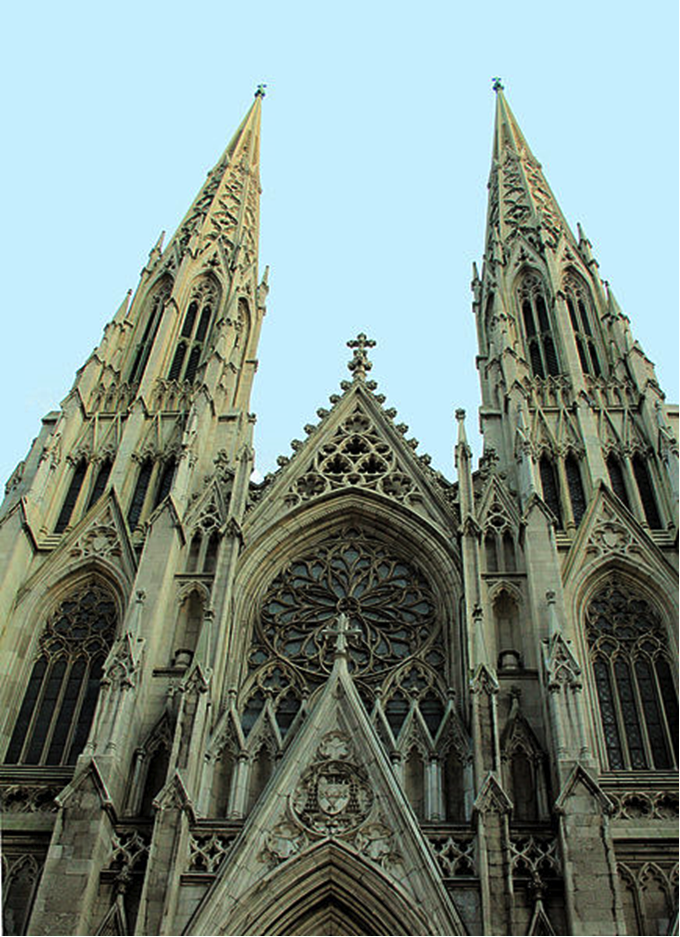St. Patrick's Cathedral is an iconic New York City landmark and home to the famous rose window, along with two other windows that have never seen the light of day.
Construction began in 1858 on the Neo-Gothic-style cathedral but was halted during the Civil War. Work resumed in 1865 and the church was dedicated on May 25, 1879. For the next 150 years the cathedral was in various stages of construction. When it was finally finished, it would have 1300 panels of stained glass. Artists from Boston, England and France created the windows.
The Lady Chapel was built from 1900-1908 and the stained glass windows were designed by Paul Vincent Woodroffe, of Chipping, England. He was also a noted illustrator of children's books. His drawings are on display in numerous museums.
The famous rose window wasn't installed until the 1950s. Charles Connick, of Boston, designed the window. Connick studied stained glass in England and France, which included the Chartres Cathedral and its famous rose windows. The rose, or Catherine windows, were a popular feature of Gothic architecture. With the cathedral having been built in the neo-Gothic style, the rose window design was a perfect stylistic fit. The window measures 26' across and is comprised of 10,500 pieces of stained glass.
During the cathedral's 2012-2015 exterior restoration and cleaning, the interior received the same attention. The stained glass windows were also cleaned. This included the rose window. A protective glazing applied to the windows decades earlier actually trapped heat and moisture and designs were underway to remedy the situation.
And then there are the windows that nobody sees. Part of that might be because they can't be seen from outside. They aren't easily seen from the inside, either. That's because they're only accessible by going up a hidden staircase. Then that leads to a passageway behind the walls that runs the length of the cathedral. And in a space behind the Gallery Organ, there is a pair of stained glass windows. According to the official explanation, "Even if we don't see it, God sees it."
The cathedral and associated buildings were declared a National Historic Landmark in 1976.
by Linda Childers


